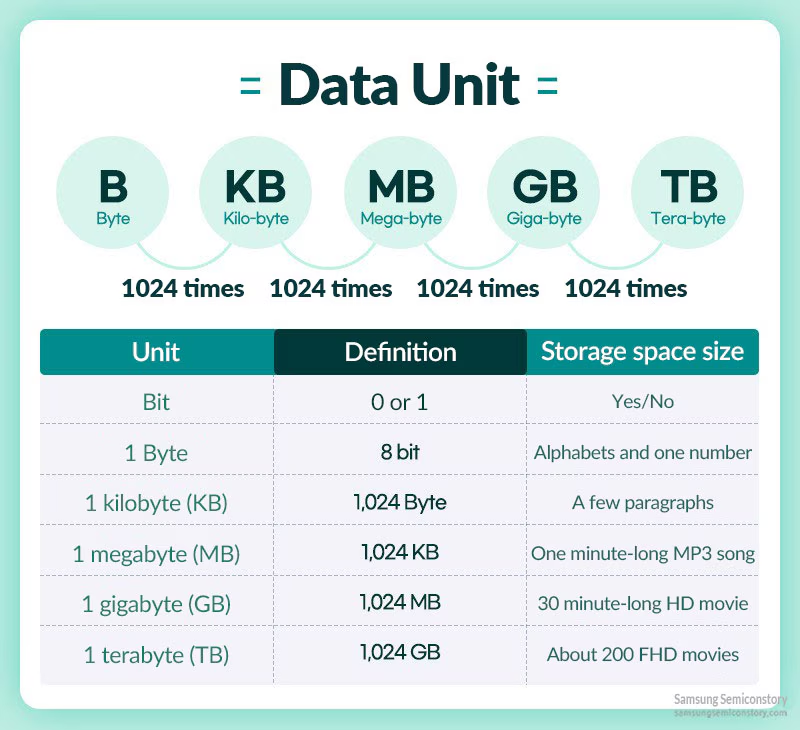AICE Computer Science Unit 1
1/27
Earn XP
Description and Tags
Binary, Hex, Decimal Conversions & Graphics and Sound
Name | Mastery | Learn | Test | Matching | Spaced |
|---|
No study sessions yet.
28 Terms
Pixel
Smallest unit of graphics
Vector Graphic
Graphic where lines and points are calculated and drawn to create an image.
Drawing Object
An object in a graphic application that can be created and manipulated as a single entity, including shapes and text.
File Header
A set of bytes contained in a file that gives information about the file, such as the size, dtad type, date, etc.
Screen Resolution
The total number of pixels the display can show.
Image Quality
The combination of screen resolution, image resolution, bit and color depth.
Bit Depth
The number of bits used to represent Red, Blue, and Green in each pixel.
Image Resolution
Total number of pixels used to create the image.
Bitmap
Graphic where each pixel is coded for a specific color to create an image.
Color Depth
How many bits are used per pixel.
Lossy Compression
A compression type that removes parts of the data to shrink the size.
Lossless Compression
A compression type that reorganizes and re-encodes the data to shrink the size of the file.
Sampling Resolution
How many bits are used to store the sampling data.
Sampling
The process of taking a measurement, or recording data at regular intervals and then storing the data.
Digital Data
Data that has been stored as binary code.
Sampling Rate
The number of samples taken in a given amount of time.
Analogue Data
Real world data streams that are continuous and never ending.
Bit
Smallest unit of data that a computer can process and store; a binary digit. Can only have two values, either “0” or “1”
Byte
8 bits! One byte can represent 256 bits of data. Most COMMON unit of measure for data storage.
Nibble
4 bits! One nibble can represent 16 bits of data.
Encoding
Writing process of converting digital data into a format that humans can understand.
Decoding
Reading process of understanding the encoding written to communicate with the computer.
Run-Length Encoding
Process of identifying repeating trends in code and re-encoding them using less bits.
Data Unit Conversion

1 and 2’s Compliment
Method for representing signed integers in binary by inverting bits (1’s compliment) and adding one (2’s compliment).
Formula for File Size (Graphics)
File size (bits) = width (pixels) x height (pixels) x color depth (bits)
Drawing List (Vector Graphic)
A sequence of instructions for drawing shapes or images in computer graphics, often stored within a file to determine how visuals are rendered on screen.
Property (Vector Graphic)
An attribute that defines characteristics of vector graphic objects, such as color, stroke width, and fill.